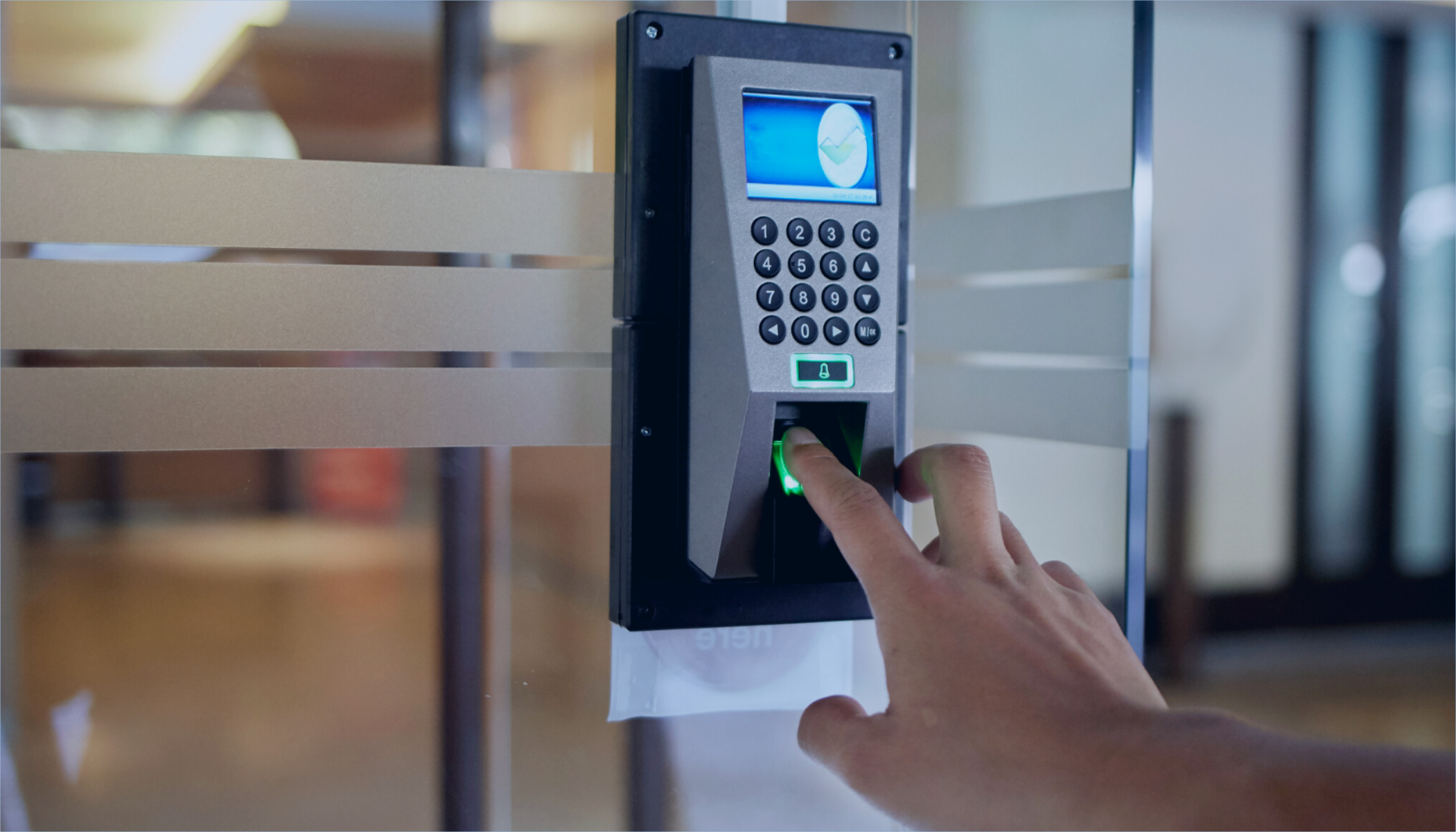In the realms of physical and information security, access control refers to the selective limitation of access to a location or other resource, whereas access management refers to the process. Consuming, entering, or using are all words that can be used to describe the process of accessing. Authorization is the process of gaining access to a resource.
To put it another way, access control is a security approach that governs who or what can view or utilize resources in a computer environment. It is a basic security concept that reduces the risk to the company or organization.
Physical and logical access control are the two types of access control. Access to campuses, buildings, rooms, and physical IT assets is restricted via physical access control. Connections to computer networks, system files, and data are all restricted by logical access control.
Organizations utilize electronic access control systems to track employee access to restricted company locations and private regions, such as data centers, using user credentials, access card readers, auditing, and reports. To prevent unwanted access or operations, some of these systems have access control panels that restrict admittance to rooms and buildings, as well as alarms and lockdown capabilities.
By analyzing required login credentials, such as passwords, personal identification numbers (PINs), biometric scans, security tokens, or other authentication elements, access control systems conduct identification, authentication, and authorization of individuals and entities. Multi-factor authentication (MFA), which needs two or more authentication factors, is frequently used to defend access control systems as part of a layered defense.

What is the significance of access control?
The purpose of access control is to reduce the danger of unauthorized access to physical and logical systems posing a security risk. Access control is a critical component of security compliance programs because it guarantees that security technology and access control rules are in place to secure sensitive data, such as customer information. Access to networks, computer systems, apps, files, and sensitive data, such as personally identifiable information (PII) and intellectual property, is usually limited by infrastructure and processes in most businesses.
In dynamic IT environments involving on-premises systems and cloud services, access control solutions are complex and difficult to administer. Following a number of high-profile data breaches, IT companies have shifted away from single sign-on (SSO) solutions and toward unified access management, which provides access restrictions for both on-premises and cloud settings.
What is the process of access control?
These security measures work by identifying a person or entity, confirming that the person or application is who or what it claims to be, and approving the access level and set of actions associated with the login or IP address. Lightweight Directory Access Protocol (LDAP) and Security Assertion Markup Language (SAML) are two directory services and protocols that provide access controls for authenticating and authorizing users and entities and allowing them to connect to computer resources like distributed applications and web servers.
Depending on their compliance needs and the security levels of information technology (IT) they are trying to safeguard, organizations use various access control methods.

Access Control Types
The following are the most common access control models:
- Mandatory access control (MAC): This is a security architecture in which a central authority manages access permissions based on many levels of security. Classifications are allocated to system resources and the operating system (OS) or security kernel, which are commonly employed in government and military environments. It gives or refuses access to certain resource items based on the user’s or device’s information security clearance. For instance, Security Enhanced Linux (SELinux) is a Linux OS implementation of MAC.
- Discretionary access control (DAC): This is a technique of access control in which the owners or administrators of the protected system, data, or resource define the policies that define who or what is allowed to access the resource. Administrators can limit the propagation of access permissions in many of these systems. The absence of centralized control is a typical criticism of DAC systems.
- Role-based access control (RBAC): This is a frequently used access control technique that restricts access to computer resources based on individuals or groups with specified business functions — for example, executive level, engineer level 1, and so on — rather than individual users’ identities. To manage employee access to systems, the role-based security model relies on a sophisticated network of role assignments, role authorizations, and role permissions established using role engineering. MAC and DAC frameworks can be enforced using RBAC systems.
- Access control based on rules. The system administrator establishes the rules that govern access to resource objects in this security architecture. These regulations are frequently based on circumstances, such as the time of day or the place. It’s not commonplace for access policies and processes to be enforced using a combination of rule-based access control and RBAC.
- Attribute-based access control (ABAC): This is a strategy for managing access rights that involves analyzing a collection of rules, regulations, and relationships based on user, system, and environmental characteristics.

Putting in place access control
Access control is a process that is integrated into the IT environment of a company. Identity management and access management systems may be involved. Access control software, a user database, and administration tools for access control rules, auditing, and enforcement are all included in these systems.
When a user is introduced to an access management system, system administrators set up permissions based on access control frameworks, job responsibilities, and workflows using an automated provisioning system.
Employees should only have access to resources that they need to fulfill their immediate job tasks, according to the best practice of least privilege.
Access Control Challenges
The extremely scattered nature of modern IT is responsible for many of the access control difficulties. Because assets are dispersed both geographically and logically, it’s tough to keep track of them. The following are some specific examples:
- Managing distributed IT environments in a dynamic manner.
- Password exhaustion.
- Consistent reporting provides visibility into compliance.
- Avoiding application-specific silos by centralizing user directories.
- Consistent reporting provides data control and visibility.
Access control strategies in the modern era must be dynamic. Because most of a company’s computing assets are kept on premises, traditional access control solutions are more rigid. Many cloud-based and hybrid systems exist in today’s IT environments, distributing assets across physical locations and a number of unique devices. Because assets are growing more distributed, a single security fence that protects on-premises assets is becoming less useful.

Because the assets they employ are increasingly transient and scattered, companies must verify individuals’ identities to protect data security. The asset itself no longer conveys as much about the individual user as it once did.
Authentication is frequently overshadowed by permission in organizations. Authentication is the process of using biometric identification and multi-factor authentication to verify that a person is who they claim they are. Because assets are scattered, organizations have a variety of options for authenticating a person.
Authorization, which is the act of granting someone correct data access based on their confirmed identity, is the procedure that corporations struggle with the most. If a person leaves a position but retains access to the company’s assets, for example, this could be a problem.
Because the asset the individual uses for work — a smartphone with corporate software, for example — is still connected to the firm’s internal infrastructure, it can create security flaws because it is no longer monitored because the individual is no longer employed by the company. If left unchecked, this might produce issues for a company.
Because the device is no longer visible to the company in many ways but still connected to company infrastructure, if the ex-device employee’s is hacked, the hacker could obtain access to important company data without the firm’s knowledge. The hacker may be able to alter passwords, gain access to critical information, or even sell employee credentials or consumer data to other hackers on the dark web.
One solution to this problem is to closely monitor and report on who has access to protected resources so that any changes may be detected quickly and access control lists (ACLs) and permissions changed to reflect the change.
The user experience (UX) design of access control technology is an often overlooked difficulty in access control. Employees may utilize access management technology incorrectly or completely circumvent it if it is difficult to use, resulting in security flaws and compliance gaps. If a reporting or monitoring program is difficult to use, the reports themselves may be compromised as a result of an employee error, resulting in a security gap as a consequence of an essential permissions change or security flaw that remained unreported.

Software for access control
There are many different forms of access control software and technologies, and maintaining access control sometimes necessitates the employment of many components. The software tools could be on-premises, in the cloud, or a combination of the two. They may be primarily concerned with a company’s internal access control or with consumer access management. Access management software comes in a variety of shapes and sizes.
applications for reporting and monitoring
provisioning tools for password management
repositories of identity
Implementation tools for security policies
Microsoft Active Directory (AD) is an example of software that combines many of the above-mentioned functions into a single package. IBM, Idaptive, and Okta are among the other companies with popular identity and access management (IAM) technologies.
Source: TechTarget Blog


